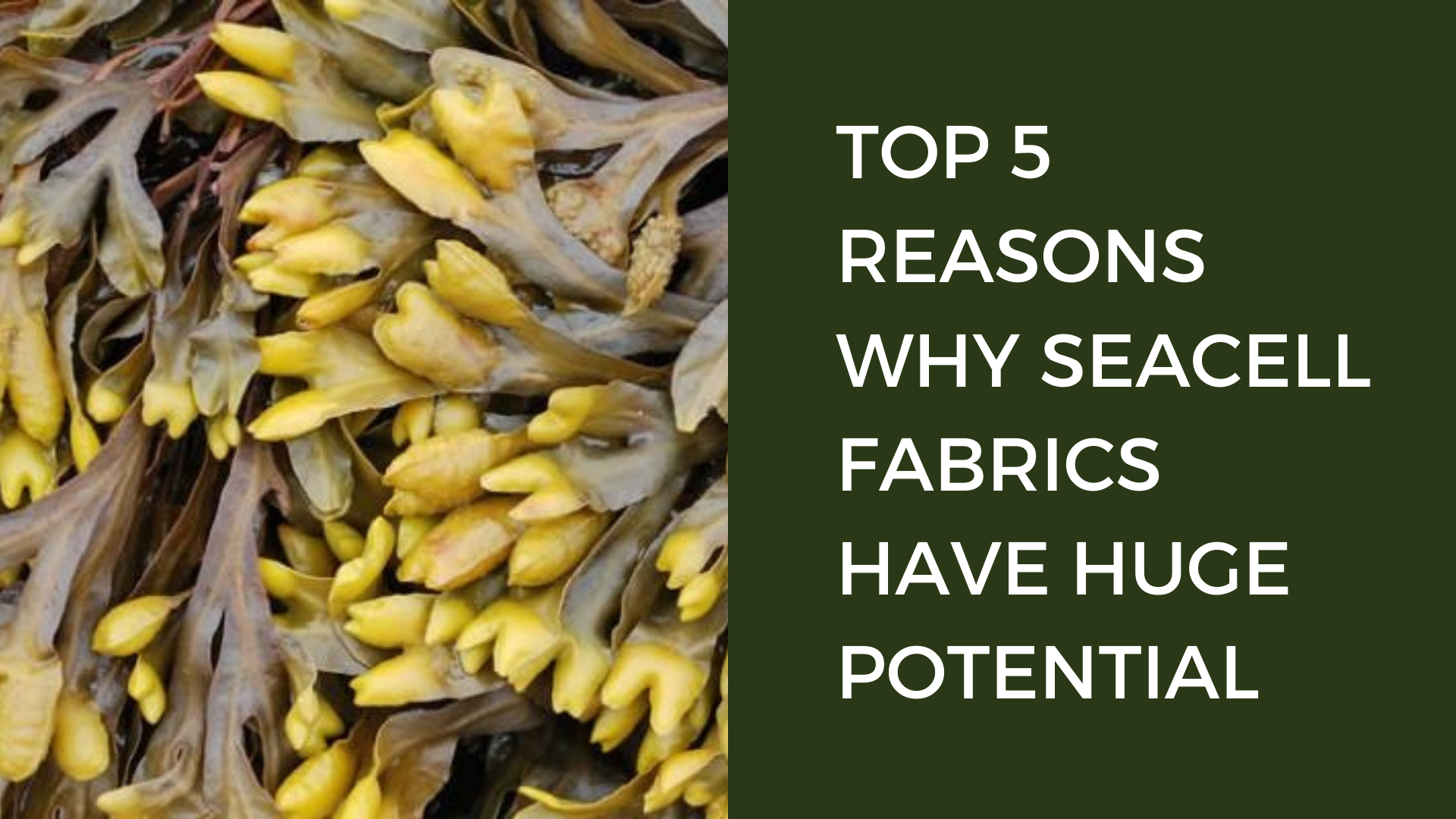If you have been following our blogs, you already know that we love sustainability and innovations in the fabrics industry. In this article, we are going to look at a growing type of fiber, which is loved by western brands, retailers, and customers alike for its negative impact on the environment.
What are SeaCell Fabrics?
After years of scientific research, the team at smartfiber AG, a corporation based in Germany, has successfully developed SeaCell fibers, made from renewable resources. The material is manufactured by combining seaweed and wood cellulose.

The seaweed is washed, dried, carefully ground, and carefully incorporated into the cellulose fiber, as seen in the image above.
These SeaCell fabrics are produced only from sustainable raw materials, which are wood and seaweed. These methods drastically save both energy and resources.
Seaweeds. .

Are generally found beneath the sea. It grows like grass under the sea. Various types of seaweeds are found around the globe making it easy to source the raw material. SeaCell fibers are made from the Ascophyllum nodossum seaweed, also known as the knotted wrack. It is found in the Icelandic fjords. Wrack is a wider family of seaweed that has a wide range of strains that are found globally.
While harvesting the seaweed from sea beds, companies make sure that they use gentle methods and sustainable processes. Seaweeds are only cut above their roots while the harvesting process, which helps in regeneration. This process leaves the seaweed untreated and all ecological value is retained.
Reasons brands are loving SeaCell fabrics
Maximum comfort
These seaweed fabrics offer a great deal of comfort to anyone wearing it. It is soft and supple against the skin. Seaweeds give the fabrics full of health-giving minerals and vitamins to the skin, as well as anti-oxidants.
Suitable for a wide range of applications
SeaCell fabrics can be used for a wide range of clothing. From infant clothing to loungewear, it is highly effective. At the same it, it can also be used in yoga wear and other activewear garment productions.
Blends with other fibers
Most of the time, manufacturers want versatility in blending various fibers together. It gives special capabilities to the fabric. SeaCell fibers blend easily with other types of fabrics which makes them even better.
Breathable & Lightweight
This fabric is breathable and lightweight. It also absorbs sweat faster than cotton. Again a great way to use in sportswear and activewear.
Earth Friendly and sustainable
SeaCell fabrics are 100% biodegradable and vegan. It follows OEKO-TEX Class 1 sustainable practice. No chemicals are used or released as waste in their manufacturing process. Like we discussed earlier in this article, seaweed is a naturally occurring resource in our aquatic systems. It is harvested with special techniques and machines to ensure the wellbeing of the ecosystem.
“Did you know that SeaCell production methods received the 2000 European Environmental Award in the category of Technology for Sustainable Development”
So no disadvantages for SeaCell Fabrics?

The skin health benefits of the seaweeds like the anti-inflammatory properties are not yet proved by the scientific community. There are speculations about the negative impact if seaweeds are not properly harvested, which could cause harm to the ocean ecosystem. Since the fabrics are lightweight and breathable, they won’t be suitable for warm winter clothes.
What are your thoughts on these fabrics? Do you think we can see the more mainstream adaptations in the future? Or can it replace traditional fibers? Comment below.



